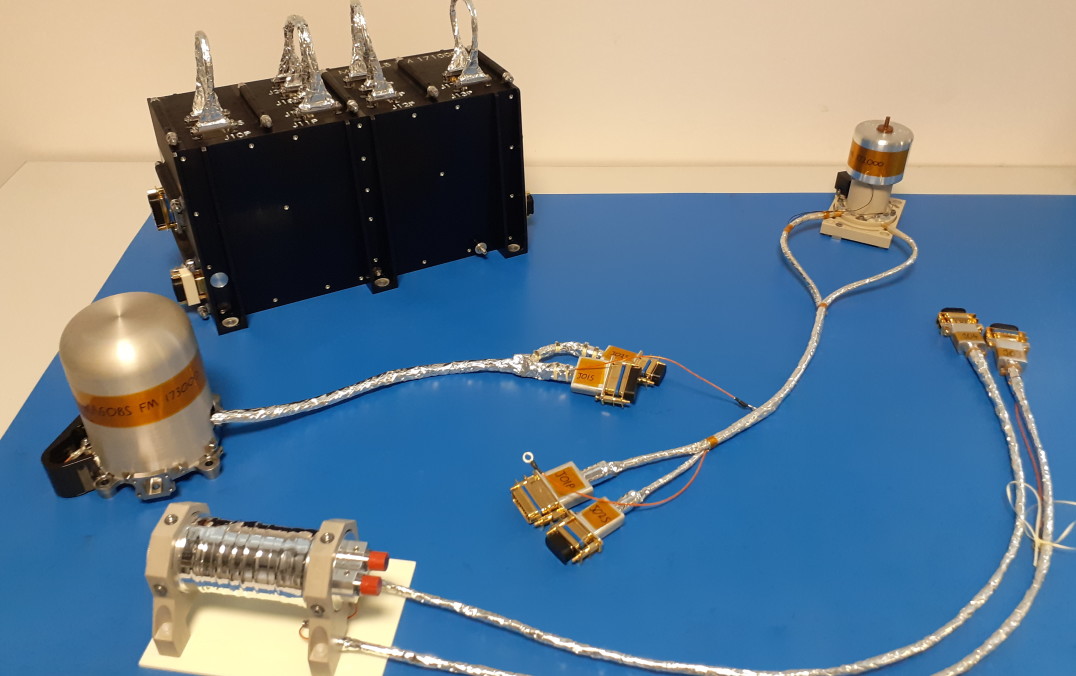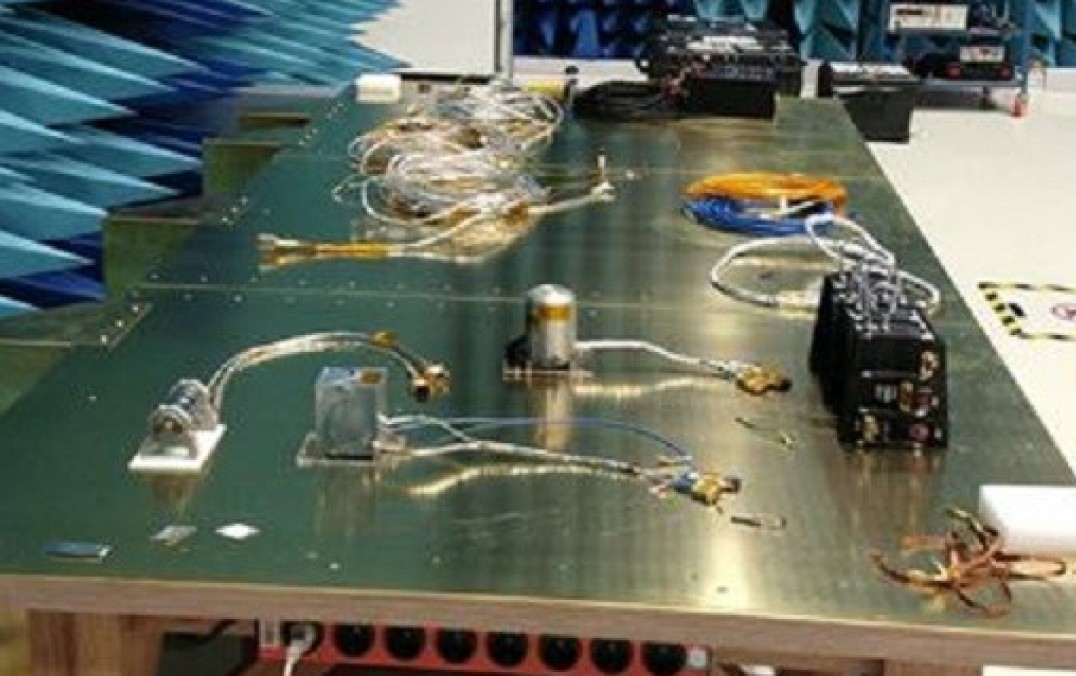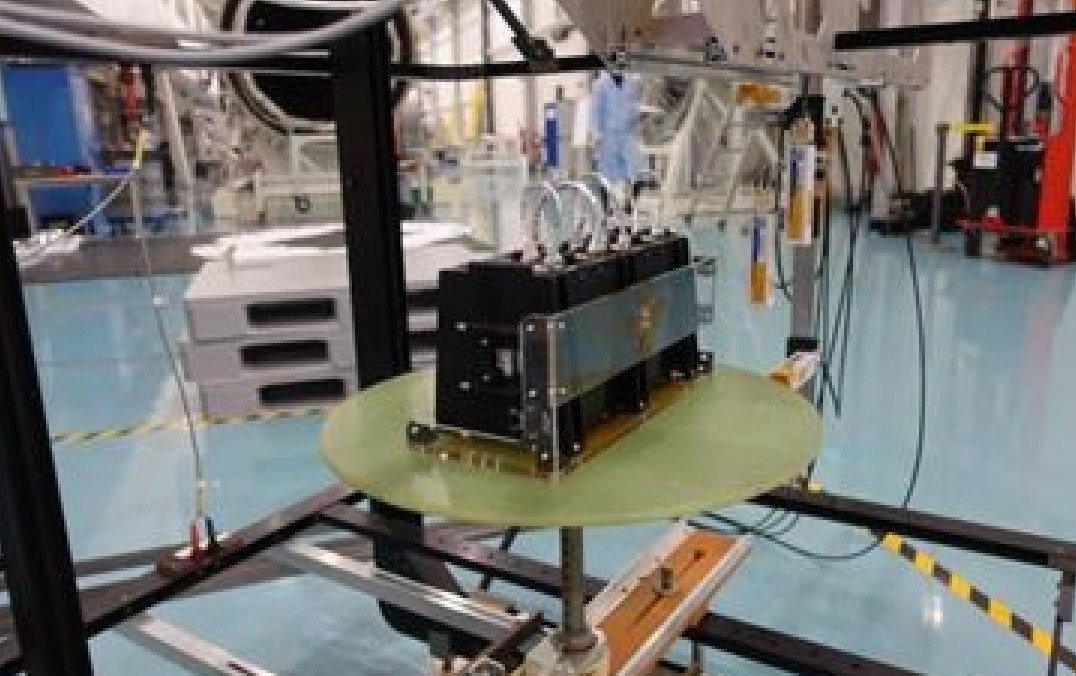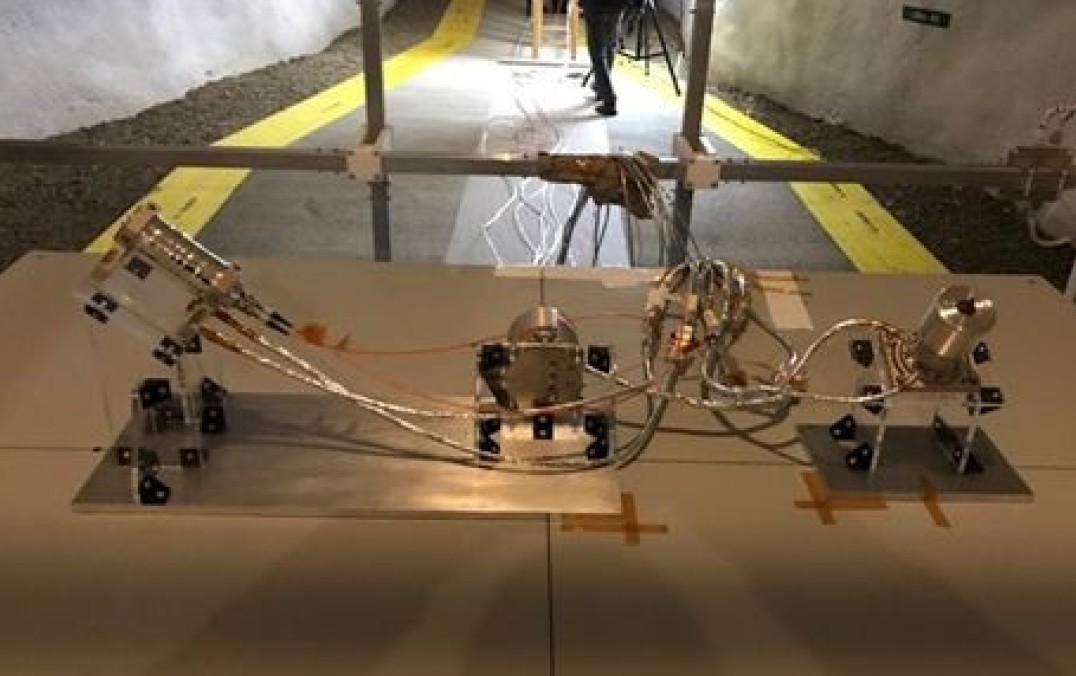

A magnetometer instrument built in Imperial labs, and in some people’s homes, is ready to be mounted on a spacecraft set to study Jupiter’s icy moons.
The magnetometer is an instrument that measures magnetic fields in space, and for the European Space Agency’s Jupiter Icy Moons Explorer (JUICE) mission, Imperial’s magnetometer will help study Jupiter and its three largest moons: Ganymede, Callisto and Europa.
It’s incredible what the team have been able to achieve, throughout even the worst stages of lockdown. Professor Michele Dougherty
The mission is due for launch in August 2022, and will take around eight years to reach the planet. One of its major science objectives is to study the liquid oceans lurking beneath the icy surfaces of the three moons, a mission for which the magnetometer is key.
Scientists know the magnetic field around Ganymede is warped and twisted, so that any signal from the ocean could easily be obscured. For this reason, the team’s magnetometer instrument comprises an extra sensor compared to previous versions; one that doesn’t measure as many variables, but is more stable in its primary measurement.
This provides a calibration for the main sensor, making sure it takes better measurements that can help detect the electrical currents flowing in the ocean.
Kitchen-table construction
Members of Imperial’s Department of Physics have designed and built magnetometers for a range of space missions, including the Cassini mission to Saturn and the recently launched Solar Orbiter. However, the team have had to build the instrument a little differently this time due to the pandemic, including some parts being constructed on kitchen tables.

Senior Instrument Manager Patrick Brown said: “We had tight and often moving deadlines from ESA, so were one of the first labs allowed back on campus, after the COVID research labs, in May 2020.
"Even so, we’ve never had the lab at full capacity during the pandemic, so a lot of things have had to be done differently, including a lot of the mechanical work being built in team members’ homes and shuttled back and forth to the lab for testing.
“We hit a snag early on as some testing showed a flaw that needed to be fixed, but the Mechanical Instrumentation Workshop Manager, Paul Brown, and his team have been very supportive in always having someone available to make and build new designs, including drilling holes for us just days before we shipped the instrument to ESA.”
Testing times
The team could also not always access their clean room, where the most sensitive parts of the instrument are usually built. Instead, they had to thoroughly clean the instrument after building, using one cotton bud at a time to remove individual pieces of dust.
After vibration and thermal vacuum testing at the Rutherford Appleton Labs in the UK during the winter, the magnetometer was sent to ESA’s labs in the Netherlands. There, Instrument Engineer Richard Baughen was able to remotely operate the instrument from his living room during electromagnetic tests, designed to make sure the instrument does not interfere with anything else on the spacecraft.
The final stage of calibration testing for the magnetometer occurred in a forest in the mountains of Austria in April 2021, a location necessarily remote to avoid interference, with the instrument again operated by remote control. The instrument was then finally delivered to ESA’s facility in Noordwjik in May and is currently waiting to be mounted onto the spacecraft as it goes through its final tests before launch next year.
Waiting for launch
The sensor part of the instrument will be mounted on a long boom, away from the main body of the spacecraft to isolate it from any magnetic fields that might be produced by the spacecraft and other instruments. Due to the sensitivity of the measurements required, the boom will be the longest ESA has ever built for a space mission, at 10.6 metres – about twice as long as any previous one.

While waiting for launch, the team will build a flight spare instrument in case anything goes wrong during testing, and will validate their software ready to test and operate the instrument after launch.
Principal Investigator for the magnetometer aboard JUICE, Imperial’s Professor Michele Dougherty, said: “It’s incredible what the team have been able to achieve, throughout even the worst stages of lockdown. The instrument has now been shipped to ESA and I am so proud of the team and all their hard work and it will all be worth it once the spacecraft is on its way to Jupiter.”
Article text (excluding photos or graphics) © Imperial College London.
Photos and graphics subject to third party copyright used with permission or © Imperial College London.
Reporter
Hayley Dunning
Communications Division

Contact details
Tel: +44 (0)20 7594 2412
Email: h.dunning@imperial.ac.uk
Show all stories by this author
Leave a comment
Your comment may be published, displaying your name as you provide it, unless you request otherwise. Your contact details will never be published.








Comments
Comments are loading...